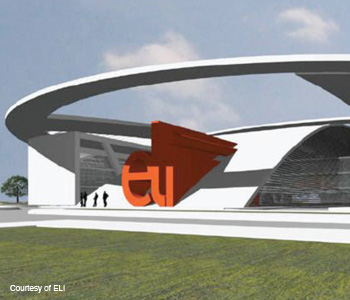Feature
The Extreme Light Infrastructure: Optics’ Next Horizon
The Extreme Light Infrastructure—a project involving nearly 40 research and academic institutions from 13 EU member countries—will allow researchers to probe laser-matter interaction at unprecedented intensity levels.
 Attosecond Light Pulse Source, Szeged, Hungary
Attosecond Light Pulse Source, Szeged, Hungary
For almost as long as the laser has been in existence, researchers have been striving to construct large-scale infrastructures that could demonstrate laser-produced thermonuclear fusion. This scientific pursuit culminated with the construction of the National Ignition Facility (NIF) at Livermore, Calif., U.S.A., and the Laser Megajoule (LMJ) in France. Both facilities deliver megajoule pulses in a few nanoseconds, corresponding to a peak power of 0.5 PW.
…Log in or become a member to view the full text of this article.
This article may be available for purchase via the search at Optica Publishing Group.
Optica Members get the full text of Optics & Photonics News, plus a variety of other member benefits.
